by Deborah Abernethy and Mike McLeod
$4,306.60 (46 bids, 20 bidders): ca. 1905 Antique Heddon Dowagiac Killer #400 Fishing Lure Original Box.
This is the box only. Box has an early label and identifies this as “Copper No 400”. Box is complete, and while there are no major tears, there is some staining, toning and scuffing to the surface and labels. Box is 5.5 inches long. Rare find.
(Photo: eBay seller estate-finders)
DBA: This is an amazing price for the box. I found where Morphy Auctions sold the actual #400 Killer Underwater Minnow lure, c. 1905, for $800 in 2015. The hooks had been replaced, and nothing was mentioned about a box. This is normally one of the highest-selling fishing lures. The oldest of the Heddon lures had the name “Dowagiac,” named for James Heddon’s hometown. The “killer” lure appeared around 1902 and came in the white picture box as shown. It is rare, and while there are many references on the Internet where there are offers to buy this box for $1,500, this may be a new standard.
If you are not familiar with the Walter L. Main Circus, it was founded in 1886 by Walter Main, who was the son of a horse farmer. This Pennsylvania-based circus went on to become best known for his trained animal expositions, including many acts involving horses. In May of 1893, this circus suffered a tragic train crash in Tyrone, PA, and many of their animals were lost as well as four workers.
Although I was able to find other posters from the Walter L. Main Circus, I was unable to find another example of the poster here. Measuring 40 inches wide by 30 inches tall, not including the attached advertisement at the bottom, this large 19th-century poster depicts “Mons. Henri W. Leonard, The Man with Teeth of Steel and Jaws of Adamant.” This strongman is depicted holding a barrel, a firing cannon and an entire horse with only his mouth. This colorful lithograph poster was printed by the Donaldson Litho Company of Cincinnati, OH, and still has strong, unfaded colors. There is some loss to the paper along the right-hand edge, as well as a couple of small tears at the top left edge that have been taped by a past owner. Overall, this rare 19th-century circus poster is in very good original and un-restored condition.
(Photo: eBay seller wwolst12)
DBA: This is a very high price for a circus poster. Why? There are several factors to analyze: is it the circus that would cause this one to sell for so much money? Is it the person who is shown in the poster? Is it the company that produced the poster? After searching, this is what I discovered: the Donaldson Company was noted for their circus posters and the very vivid colors that were used. They are also known in legal circles as part of a copyright lawsuit. No information could be found on the person Henri Leonard, and I suspect that it was not the legal name of the circus performer. I could find nothing to support a theory that the Walter Main Circus would be more collectible than other circus companies. I would suggest that this poster was desirable to a collector because of the vivid colors, the premier circus poster company that produced it, and that the “strong man” was a major component of the circus intrigue.
It is not very often that we are unable to find another example of a sign we are listing, but the antique 1920s porcelain sign in this auction is one of those rare examples. Measuring 24 inches tall by 16 inches wide, this authentic antique sign reads in the bold letters: “MIAMI FLORIDA, 25 MILES.” This highway mile-marker sign depicts a large palm tree in the center with several figures on Miami Beach in the background. Out on the ocean, you can see a steamship, and driving up from the beach is a classic 1920s automobile. Along the bottom it reads, “The Land of Palms & Sunshine,” and on the top, “This sign was Erected by Miami Chamber of Commerce and Motor Club.” Also, there was, “$25.00 Reward for the arrest and conviction of any person mutilating or injuring this sign in any manner.”
This antique Miami Florida sign is in very good original and unrestored condition. There is some chipping to the porcelain, mostly around the mounting holes. There are also some light crazing lines to the surface near the automobile.
(Photo: eBay seller wwolst12)
DBA: In 1912, Carl Fisher purchased an undeveloped island that would become Miami Beach, FL, in hopes of creating a winter vacation land for snowbirds. While Henry Ford invented the automobile, roads connecting areas of America were not yet created. He wanted to connect a system of roads initially from Chicago to Miami that would be built with money from local governments and automobile clubs. This concept expanded, and a road from the Canadian border to Miami became known as the Dixie Highway, which began construction in 1915. In 1916, Congress passed the Federal Aid Road Act which provided some help.
This artwork and description seem similar to the signs from the old Dixie Highway. The Dixie Highway magazine was published from 1916 to 1926 and stressed the importance of how quickly and efficiently the Army could haul supplies and troops from Fort McPherson to Fort Oglethorpe-a major factor in the reasoning for the Interstate Highway System in 1956. It also changed the way America lived. Prior to this first road system, only the very well-to-do could afford to vacation. When this road became viable, a road trip from Chicago to Miami would take two weeks. Many families would camp along the road.
The interest in the old Dixie Highway and in the beginnings of a road system in the United States is a reason for the price that this sign fetched.
Please see pictures as I know nothing about insulators. I do not even know if this is a telegraph insulator. Overall in good condition with a few small minor chips on the bottom inner diameter and a larger one on the outer diameter. This has lots of very tiny air bubbles in the glass and some larger bubbles as well.
Has patent numbers Dec. 19th 1871 & Aug 14th, but I cannot read the year on either one. I picked these up at a recent estate sale as they looked interesting, like a wing on them.
(Photo: eBay seller watchitfizz)
DBA: I found an identical insulator that was sold at auction in October 2014 for $4,070; it’s extreme rarity reflected in the price. This insulator is nicknamed the “wing” and is a part of the Chambers lightning rod insulator system. It was made by Hemingway Glass Company which was founded by Robert Hemingway and Ralph Gray in 1848. In 1933, the company was sold to the Owens-Illinois Glass Company. The main plant was shut down in 1966, and insulator production ceased. This is presumably one part of a set of four parts with the “wing” component being the rare one. Although this is a lot of money for this small object, there are many sales with similar prices paid, suggesting that this is the market price for this insulator.

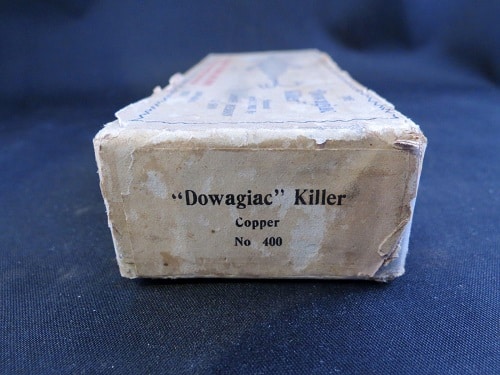
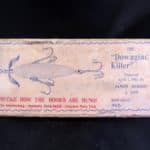
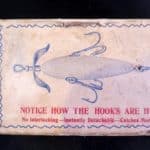

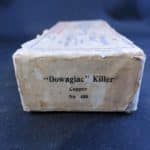
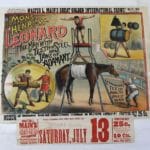
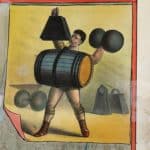

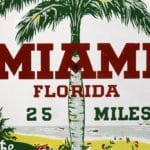
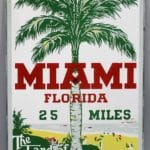
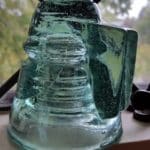
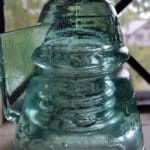
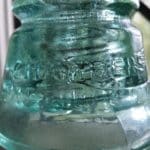
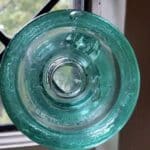



Related posts: